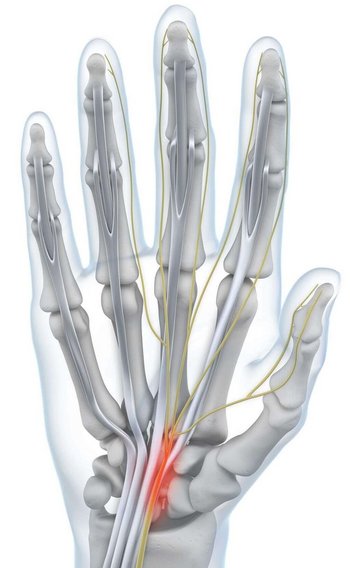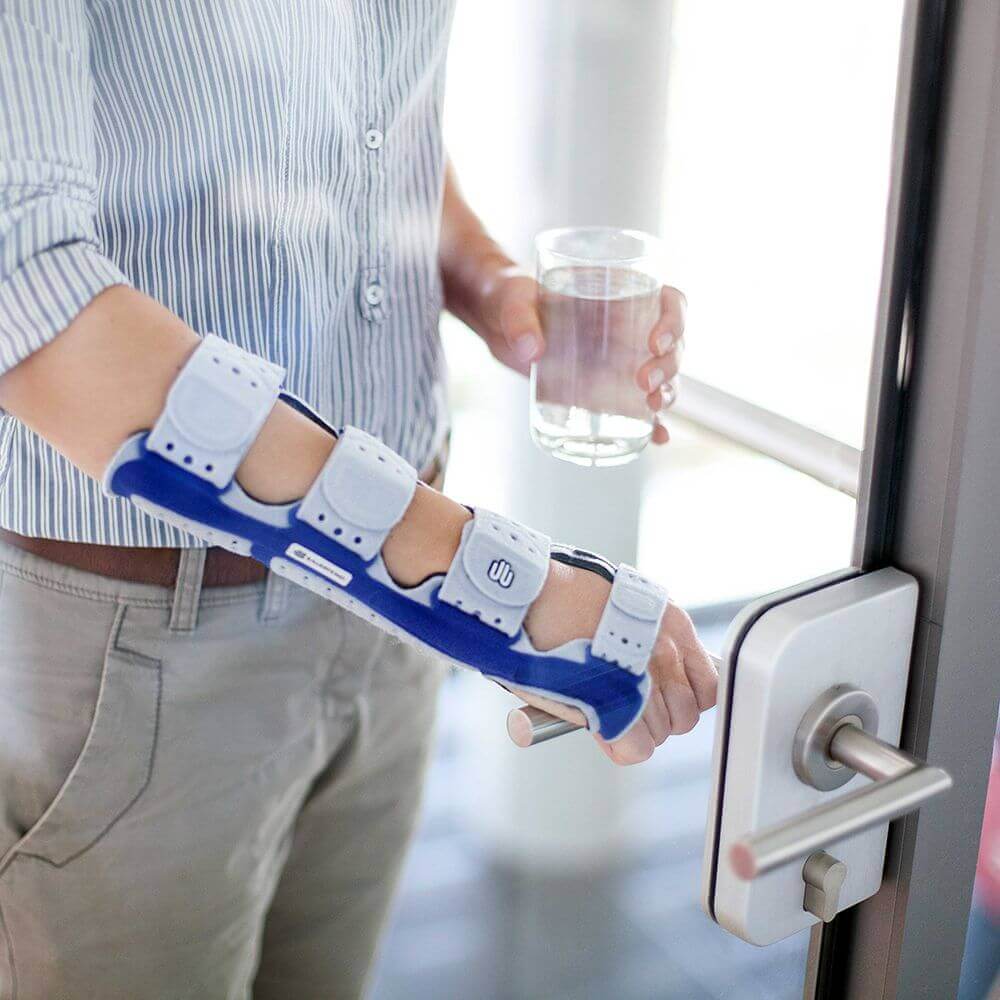
Carpal tunnel syndrome
What causes a feeling of numbness in the fingers?
Some people experience a tingling or a feeling of numbness in their fingers, primarily at night and during certain tasks. This can occur in one hand or sometimes in both hands. Others feel pain and have difficulty gripping properly as a result. What often feels like your hand has fallen asleep can be the first sign of carpal tunnel syndrome which must be treated early.
During the initial stage, typical symptoms usually occur every now and then and subside quickly, which is why carpal tunnel syndrome often goes undetected early on. Those who notice warning signs repeatedly for several weeks should have a physician examine them. If carpal tunnel syndrome remains untreated for a long time, recovery will be more difficult or even impossible. If the condition is not treated at all, permanent paralysis and impaired function in the affected hand can be the result. However, if carpal tunnel syndrome is detected and treated early, prospects for healing are promising.
Carpal tunnel syndrome: causes and development

Carpal tunnel syndrome develops when pressure is exerted on the median nerve – one of the three main nerves in the hand. That’s why the condition is also known as median nerve entrapment syndrome.
One of the main causes for its development is based on human anatomy: the carpal bones of the wrist form a flat channel through which the nerves, blood vessels, and the tendons of the finger and wrist flexor muscles run. On the flexion side, it’s closed up by a strong ligament, which creates the carpal tunnel. This tunnel has limited space. If it gets too tight, pressure will be exerted on the median nerve and the blood vessels that supply it, which impairs their function.
Common causes of carpal tunnel syndrome include:
Symptoms: how carpal tunnel syndrome manifests
When the tissue in the carpal tunnel swells, those affected feel pain in the hand because the pressure on the median nerve increases. Problems can present as follows:
The symptoms described primarily occur at night or in the morning.Both hands are usually affected, though not necessarily at the same time. The problems will often subside when the hands are moved or “shaken off”.
Diagnosing and treating carpal tunnel syndrome

Carpal tunnel syndrome can be diagnosed by discussing the patient’s medical history, using a function and provocation test (artificial triggering of symptoms), as well as measuring the nerve conduction velocity of the median nerve. Ultrasound and X-rays also provide comprehensive information about the spatial conditions in the carpal tunnel.
In cases of carpal tunnel syndrome, healing depends on the condition of the nerve. Treatment should therefore be started without delay before permanent damage is caused. Physicians generally differentiate between surgical and non-surgical (conservative) treatment options.
In mild cases or during the initial stage, conservative treatment is promising. The wrist is immobilized, primarily at night or during the day if required, using an orthosis. Irritation, pain, and swelling are also reduced by protecting and immobilizing the wrist if the carpal tunnel syndrome has been caused by excessive strain.
Carpal tunnel surgery: when is it needed?
If conservative treatment doesn’t work, the symptoms are very pronounced or have been going on for quite some time, carpal tunnel syndrome surgery cannot be avoided. During this procedure, the carpal ligament closing up the carpal tunnel is severed and tissue that might be constricting the carpal tunnel is removed. Surgery is performed with a local anesthetic, typically as outpatient treatment.
Resolving the constriction usually significantly alleviates the problems within a short time, or even eliminates them completely. After surgery, short-term immobilization of the hand using a splint or orthosis is necessary.
How does a carpal tunnel syndrome splint help?

An arm splint or an orthosis can help in different situations during the treatment of carpal tunnel syndrome. In milder cases, orthoses, such as the ManuLoc long, stabilize the wrist in a central position. This will significantly reduce pressure on the nerves and soft tissue during immobilization – at night, in particular, when symptoms occur most frequently.
The flexor muscles of the wrist are also immobilized, preventing further irritation of the inflamed or damaged tissue and promoting healing of the symptoms.
The mobility and function of the hand and fingers, however, are not compromised when wearing the ManuLoc long. This allows the patient to carry out therapeutic exercises even when wearing a carpal tunnel splint to optimize circulation and lymphatic drainage, which reduces swelling and pain. For physiotherapy or post-operative wound checks, the ManuLoc long can easily be taken off and put on again – even with one hand.
After surgery, the wrist orthosis is also ideal for short-term immobilization of the hand.
ManuLoc® long
Stabilizing wrist orthosis with longer lever
Whether carpal tunnel syndrome, acute injuries, post-operative irritation or chronic osteoarthritis: the extra-long ManuLoc long by Bauerfeind immobilizes the wrist but not the fingers and thumb.
To product page